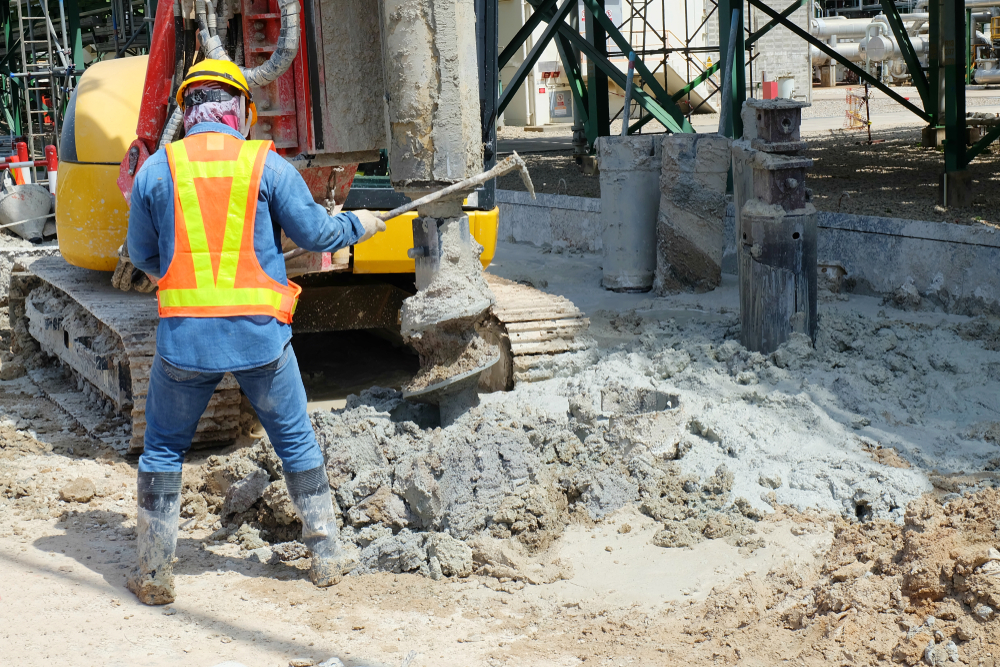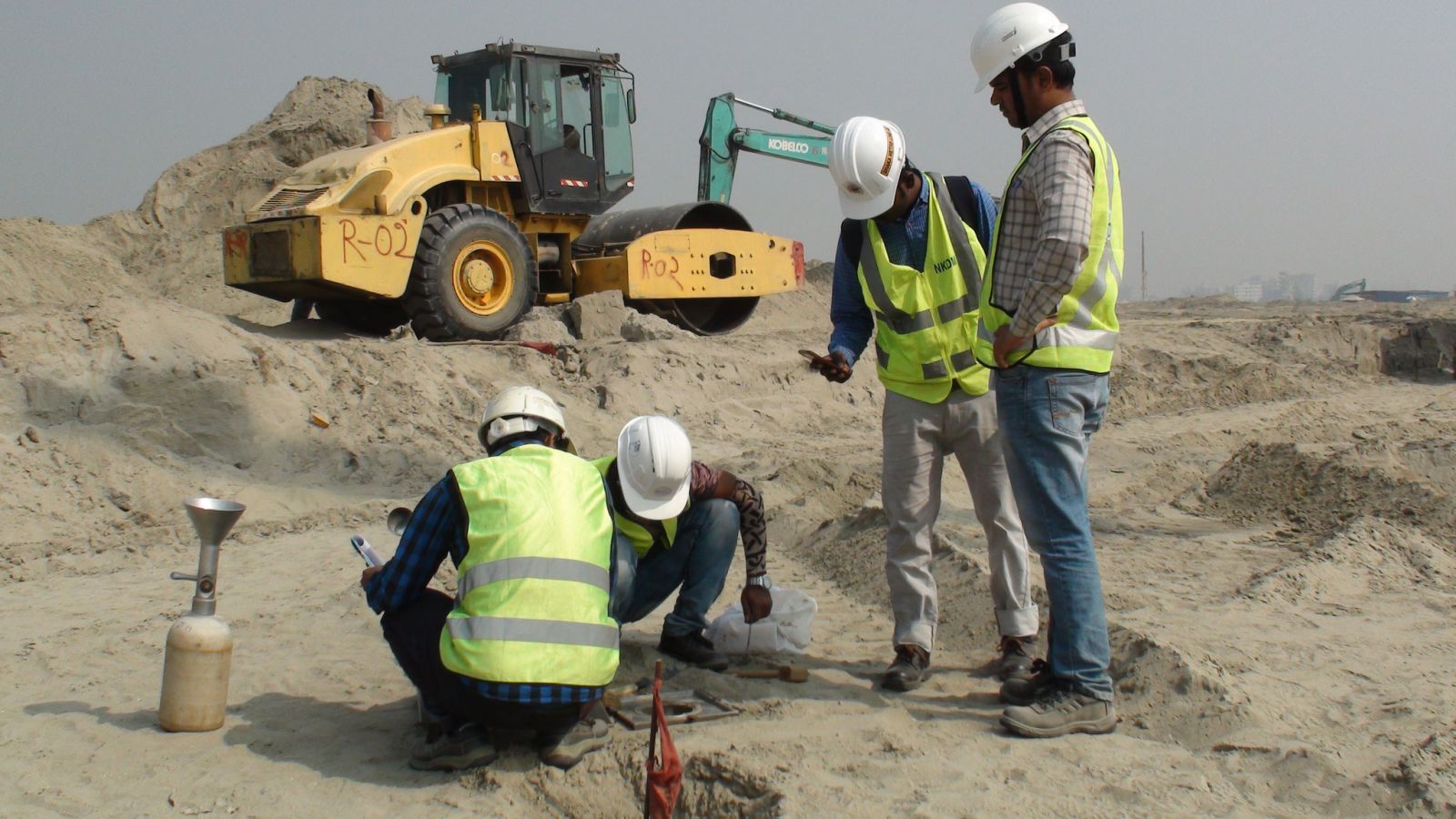Top Techniques for Geotechnical Engineers to Boost Dirt Security in Construction Projects
Wiki Article
The Interdisciplinary Approaches in the Geotechnical Sector: Connecting the Space Between Engineering, Geology, and Environmental Science for Optimal Project End Results
The integration of engineering, geology, and ecological science within the geotechnical market is not just advantageous; it is essential for accomplishing ideal task end results. What strategies might emerge to facilitate this crucial cooperation and enhance the efficacy of geotechnical methods?Relevance of Interdisciplinary Collaboration
The relevance of interdisciplinary cooperation in the geotechnical sector can not be overemphasized. Reliable geotechnical tasks call for the assimilation of varied proficiency from various fields, consisting of engineering, geology, and environmental science. This partnership makes sure that all elements of a job are thought about, causing detailed options that attend to complicated difficulties.When functioning in isolation,Interdisciplinary partnership cultivates development by enabling experts to share insights and methods that might not be obvious. By leveraging the staminas of numerous disciplines, groups can identify potential risks, enhance design procedures, and improve the sustainability of geotechnical projects. In addition, such partnership advertises an all natural understanding of site-specific conditions, which is essential for accurate evaluation and decision-making.
The intricacy of geotechnical projects requires a coordinated technique to analytical. When designers, rock hounds, and environmental scientists work with each other, they can develop a cohesive technique that lines up technological needs with environmental considerations and regulative conformity. This harmony not only enhances job end results but likewise adds to the long-term resilience of facilities. Inevitably, interdisciplinary collaboration is essential for advancing ideal practices and accomplishing quality in the geotechnical industry.
Trick Duties of Each Self-control
Cooperation among numerous disciplines is not just valuable; it is essential for the effective implementation of geotechnical jobs. Each self-control-- design, geology, and environmental science-- plays a distinct yet interconnected role that adds to project efficacy and sustainability.Geotechnical engineers are primarily responsible for creating foundations and making sure architectural integrity. They examine dirt and rock buildings to assess load-bearing capacities, giving crucial information for risk-free construction practices. Their know-how allows the formulation of cutting-edge options to complex challenges.

Environmental researchers assess the potential impacts of construction on ecological communities and water resources. They carry out environmental evaluations and create reduction approaches to decrease negative effects. By incorporating environmental considerations, they make certain compliance with regulations and advertise sustainability throughout the project lifecycle.
Study of Successful Assimilation
Successful assimilation of geotechnical self-controls can be exemplified with various study that highlight the effectiveness of team effort in dealing with complex design difficulties. One noteworthy example is the building of the Hong Kong-- Zhuhai-- Macau Bridge, where a joint method entailing geotechnical engineering, geology, and ecological scientific research was crucial. Geologists and designers worked in unison to assess the seabed problems and maximize the structure design, making certain security and minimizing ecological impact.Another impactful instance is the improvement of incline security in the San Francisco Bay Area, where an interdisciplinary team incorporated geotechnical analysis with ecological analyses. By integrating geological studies and hydrological studies, the team successfully recognized potential landslide dangers and applied effective mitigation measures, enhancing safety and security and sustainability.
Moreover, the redevelopment of Brownfield websites usually calls for a multidisciplinary approach. In one case in Chicago, cooperation amongst geotechnical engineers, environmental scientists, and metropolitan coordinators caused the effective removal of polluted dirt, allowing for the safe improvement of the website into a community park. These study illustrate that interdisciplinary partnership not just addresses technological challenges however additionally fosters ingenious services that benefit both communities and projects.
Challenges in Multidisciplinary Projects

Moreover, collaborating schedules and operations amongst different teams can be bothersome, specifically when each self-control has unique job milestones and deliverables. This imbalance can result in hold-ups and enhanced prices. The difficulty of source allowance also impends big; guaranteeing that specialized competence is offered at vital junctures calls for cautious preparation and foresight.
Last but not least, regulative conformity positions another substantial difficulty. Each discipline may face different regulatory structures, and lining up these needs to satisfy project purposes can be intricate and time-consuming. Attending to these challenges demands strong leadership and effective communication techniques to promote collaboration and make sure that geotechnical engineers multidisciplinary teams work cohesively towards shared objectives.
Future Trends in Geotechnical Practices
As the geotechnical sector evolves, emerging patterns are improving techniques to resolve the challenges faced in multidisciplinary jobs - engineer of record. One significant pattern is the boosted assimilation of advanced innovations, such as expert system and machine knowing, into geotechnical analysis and layout. These modern technologies boost anticipating modeling and threat analysis, making it possible for designers to make even more enlightened choices throughout the task lifecycle
Furthermore, the adoption of electronic doubles and real-time monitoring systems is becoming a lot more common. These devices promote recurring analysis of dirt problems and architectural efficiency, allowing for prompt interventions when issues occur.
Conclusion
In verdict, the assimilation of design, geology, and ecological scientific research is important for achieving optimum results in the geotechnical industry. Successful instance research studies illustrate the advantages of this technique, while acknowledging the challenges faced in multidisciplinary tasks.The combination of engineering, geology, and ecological science within the geotechnical sector is not simply beneficial; it is necessary for attaining ideal project results. Effective geotechnical projects call for the combination of diverse proficiency from numerous fields, including design, geology, and environmental scientific research.Navigating the intricacies of multidisciplinary jobs in the geotechnical industry provides several significant difficulties.As the geotechnical market evolves, emerging trends are reshaping practices to attend to the difficulties dealt with in multidisciplinary tasks. Geotechnical engineers are significantly collaborating with environmental researchers to ensure that jobs straighten with sustainability goals and conform with regulatory requirements.
Report this wiki page